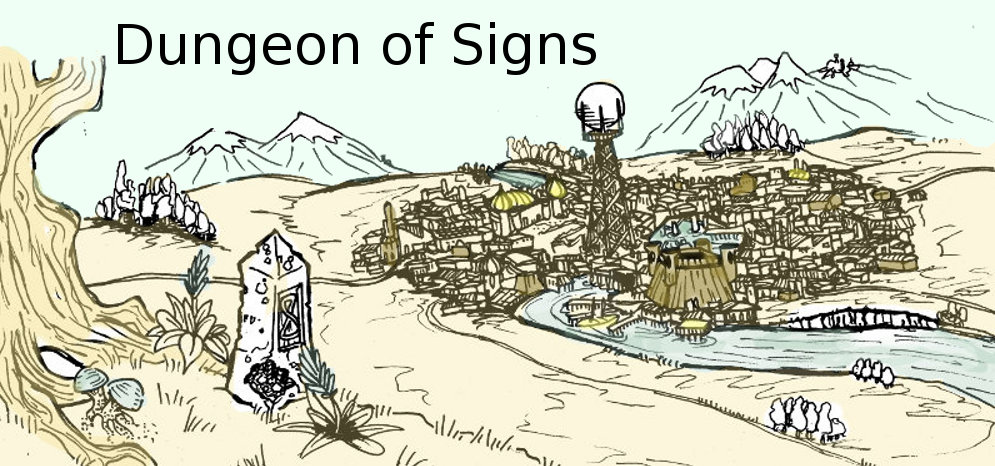CONFLICTED ABOUT
ZIGGURATS
 |
| DCC has pretty sweet cover art. |
In the likely case that I am wrong about being DCC shy I've decided to pick up one of the DCC adventures and read it. Sailors of the Sunless Sea comes highly recommended, lets see if it makes me as cranky as taking fifteen minutes to figure out how some PC's magic missile works while they hold up the rest of the players flipping through some kind of tome of magic tables. I should mention that I've also played in a couple of games of Perils of the Purple Planet which seems fairly a straightforward Sword and Planet style romp tinged with Carcosa. I've enjoyed these games, but they have so far been funnel games with little of DCC's complexity involved.
The adventure I purchased is a twenty page PDF that promises "100% good, solid dungeon crawl, with the monsters you know, the traps you remember, and the secret doors you know are there somewhere." Now I both like and hate this sentiment - a lack of long winded speeches and NPCs that aren't some kind of indestructible Dragonlance Mary-Sue GM pawn sound good, but "no weird settings ... with monsters you know, traps you remember" sounds a bit pedestrian. The question then becomes, what part of this opening rhetoric is overblown if any? Will this be an "Orcs in a Hole" pastiche of early D&D adventures for the sack of nostalgia? Thankfully the answer to that question is no - despite feeling like an old school style dungeon crawl (Really it's short and linear) from ruined keep to underground temple (a small one) Sailors on the Starless Sea does take some effort to distinguish itself by having unique monsters and interesting content.
THE ADVENTURE
The local village has been losing citizens to nighttime abductions and
correctly blames these tragedies on a nearby ancient and abandoned keep.
The keep is home to a cult of chaos aligned beastmen and vegetable zombie
horrors. Worse, beneath the keep is an underground lake with temple of
chaos at the center, where the beast cult is reviving their ancient
patron.The keep itself is only a few areas, most of which contain a deadly puzzle. The design here is clearly in the vein of "the only way to win is not to play" as there are no rewards for negotiating the chaos sinkhole or messing with the chaos well. The three entrance aspect of the ruined keep is an excellent effort to provide variety and enable player agency, though given the size of the keep these entrances represent about half the content. The major enemy within the keep are beastmen - yes these are orcs, but they are well done and a table provides a great deal of varied disturbing appearances for the small number of beastmen within the ruined keep.
After rescuing some captives and recovering a small bit of treasure the adventurers - likely fewer and wiser. Can descend into the depths of the keep and quickly find themselves on the shores of a huge underground lake. A boat floats offshore to cross, but the lake is haunted by some kind of terrible chaos squid with lovely evocative texture. There are several ways to get to the boat, suborn the chaos leviathan or otherwise interact with the lake, but the adventure still only goes one way - across the lake, up a beast-man invested ziggurat and to a lava pit to fight a reborn chaos champion. The fight over the party gets some chaos armor and flees the collapsing cavern.







